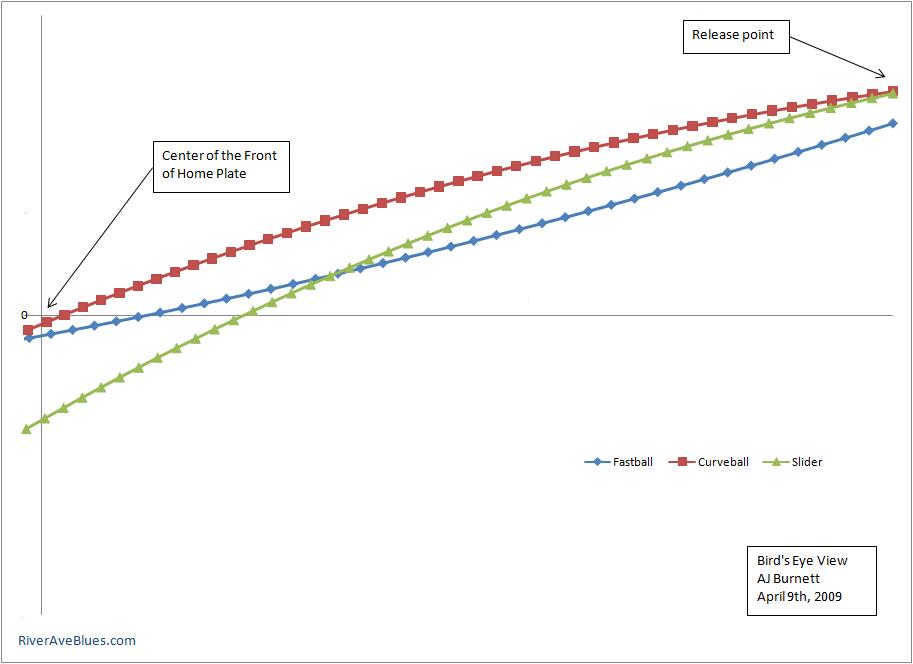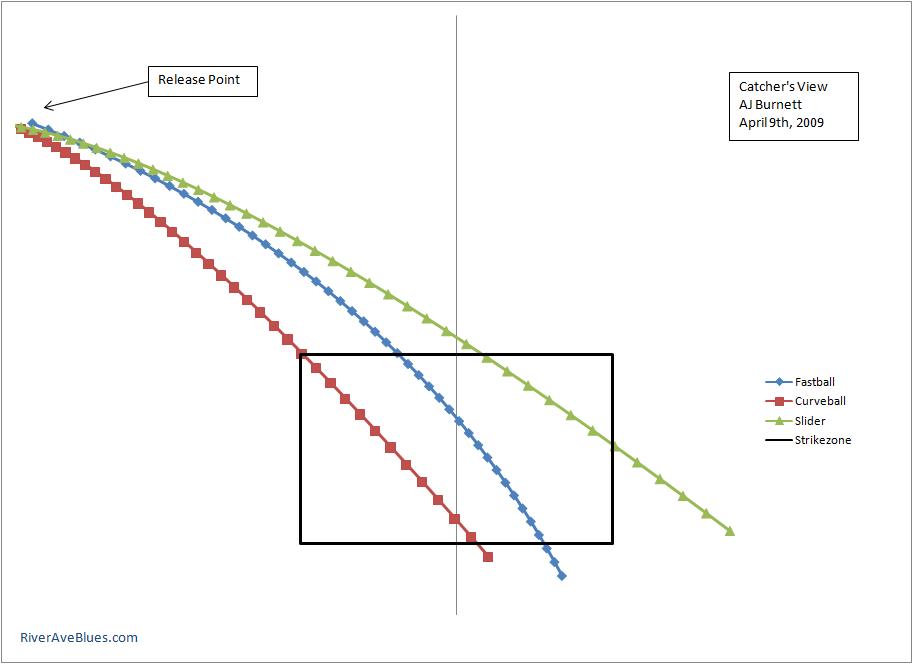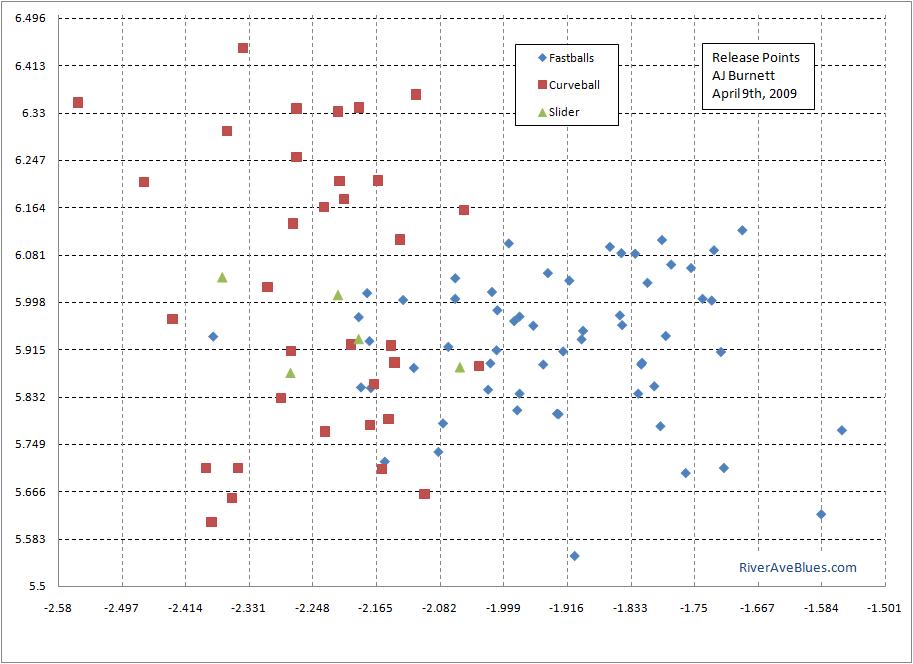For the first time this season we can take a look at some Pitch f/x data and not have to try to figure out what went wrong. Except for a minor third inning hiccup, AJ Burnett handled the Orioles well yesterday afternoon, throwing 98 pitches in five and a third innings of work. You’d like to see him be more efficient, but it’s only April. Plus the ump was a little tight on the corners, which certainly didn’t help AJ or Alfredo Simon.
Those 98 pitches were made up of 59 fastballs, 34 curveballs, and just 5 sliders. Pitch f/x says he didn’t throw any changeups, which is kind of surprising, but whatever. Burnett was pretty overpowering at times, but when he missed his spots the O’s really put a charge into it. It was great to see a Yankee pitcher be able to get out of a tight spot by striking a guy or two out; in years past we were stuck watching contact oriented pitchers rely on a shotty defense to escape a jamb.
Let’s kick this off with the usual, the flight paths. Hopefully you’re familiar with these by now. Remember, click on any graph in this post for a larger view.
The bird’s eye look doesn’t tell you much, except that his slider slides and his fastball runs a little bit. The first base view is much cooler:
CC Sabathia and Chien-Ming Wang are both fastball-slider guys, so the first base view wasn’t all that exciting. Burnett’s a fastball-curveball pitcher though, so this angle becomes a little more useful. Check out the hump in that curve, cool stuff, no? It also looks like his slider might be more of a slurve, that is a curveball thrown harder than usual, but not as hard as a typical slider.
Each tick mark represents 1/100th of a second, so the farther apart the ticks are, the faster the pitch. You can definitely see the difference in velocity between Burnett’s heat and his breaking stuff in the graph. Here’s the catcher’s view:
The tick marks are all bunched up at the top of the curve because of the hump, but it drops off the table pretty good at the end. Here’s Burnett’s release points:
His release points are nice and tight, fitting in a 12-inch tall by 13-inch wide box. I took a look at one of Burnett’s better starts last year, and the release points from that game fit right into this same box, which was pretty cool.
Unlike CC & CMW, Burnett didn’t have any obvious mechanical issues and was throwing the ball free and easy all afternoon. Check out his velocity:
I plotted both his fastball and curve so you can see the difference between the two pitches easier than squinting at the flight path graphs. That’s nearly a fifteen mile an hour drop between his heater and curve, and that’s just not fair. Imagine gearing up to hit a guy who’s throwing 95 with ease only to have him drop an 80 mph hammer on you. Not fair. Burnett did tire towards the end of his outing, but tiring in this case means throwing 94 instead of 97. I heart power arms.
Tomorrow I’ll take a look at Andy Pettitte’s season debut, but I think we’re all looking forward to seeing how CC rebounds on Sunday.





Leave a Reply
You must be logged in to post a comment.